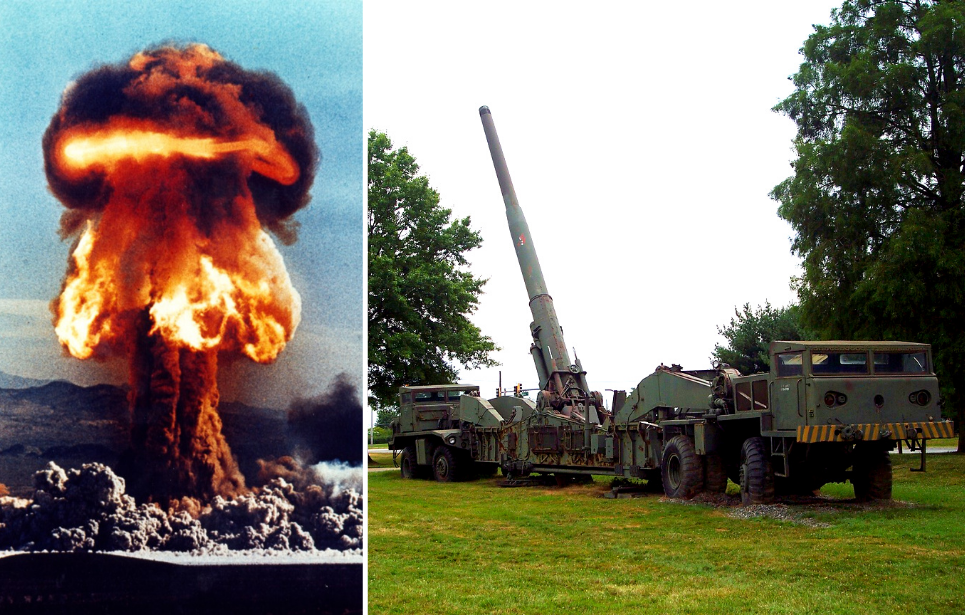Toward the start of the Cold War, the United States government looked into developing atomic weapons capable of launching an attack on the Soviet Union, should tensions escalate. Among those developed during this time was the M65 atomic cannon, an artillery weapon capable of firing a nuclear warhead.
The development of an atomic cannon
The M65 atomic cannon was designed by Robert Schwartz at Picatinny Arsenal, an American military research and manufacturing facility in New Jersey. Schwartz took the size of the German Krupp K5 railroad gun and scaled up the 240 mm howitzer M1 to develop his design. It was subsequently approved by the Pentagon, thanks to the intervention of Samuel Feltman, the chief of the ballistics section of the ordnance department’s research and development division.
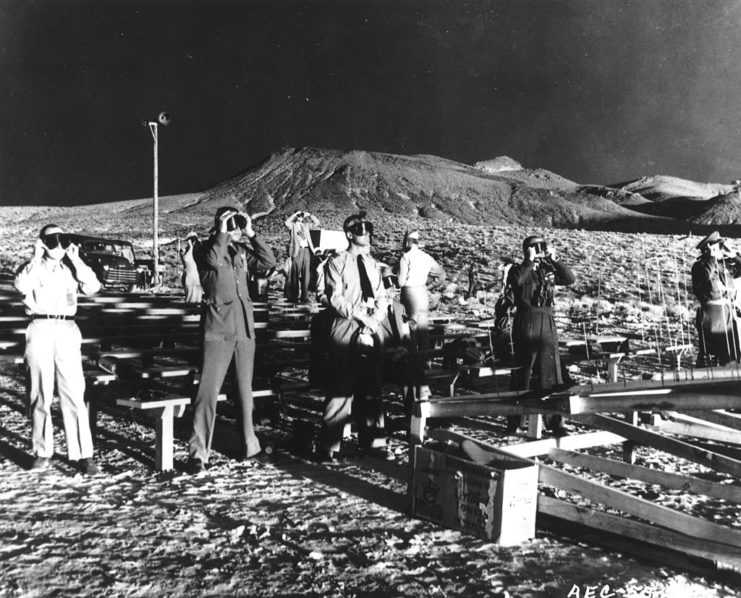
What followed the M65’s approval was a three-year development effort that saw the project advance enough to allow a prototype to be present at the inauguration parade of President Dwight D. Eisenhower on January 20, 1953.
The M65 atomic cannon’s specs
The M65 atomic cannon was incredibly large. At 85 feet in length and weighing a whopping 172,865 pounds, the artillery weapon needed to be transported by two tractors that were designed to operate in the same way as Schnabel freight cars. Due to its size, it was operated by a crew of between five and seven individuals.
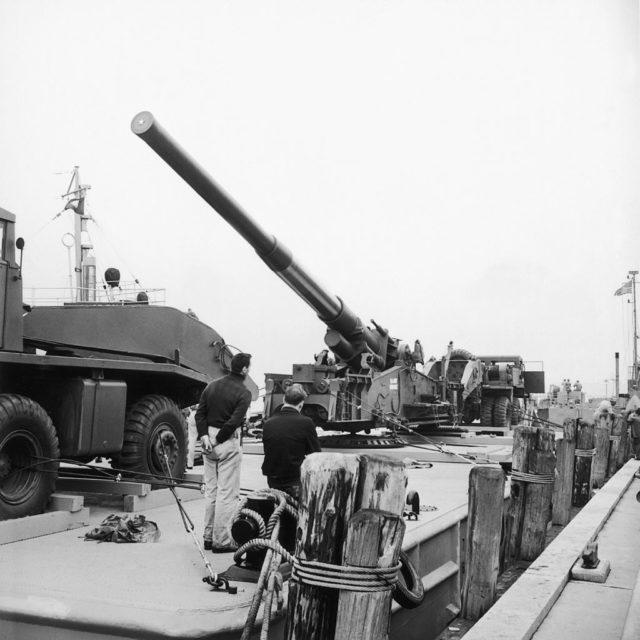
The cannon’s gun was assembled to balance on a ball and socket joint, allowing it to turn. However, this movement was limited by a track placed beneath it. To deploy the gun, the M65’s crew needed to lower it from the two tractors onto the ground.
With a muzzle velocity of 2,500 feet per second, the atomic cannon was designed to fire a gun-type fusion W9 nuclear warhead that weighed 364 kg. However, the range at which it could be fired was limited to just 20 miles.
Testing Atomic Annie in Nevada
One of the M65 atomic cannons, nicknamed “Atomic Annie,” was tested as part of the US military’s Operation Upshot-Knothole nuclear tests. The artillery weapon was transported from Fort Sill, Oklahoma to Area 5 of the Nevada Test Site, today known as the Nevada National Security Site, where it was fired in front of a large crowd of military and government officials.
Given the codename “Grable,” the test resulted in the successful detonation of Atomic Annie’s W9 warhead just 19 seconds after it was fired. The shell exploded some seven miles from where the crowd was situated, with a yield estimated to be similar to that of Little Boy, the atomic bomb dropped on Hiroshima during the Second World War.
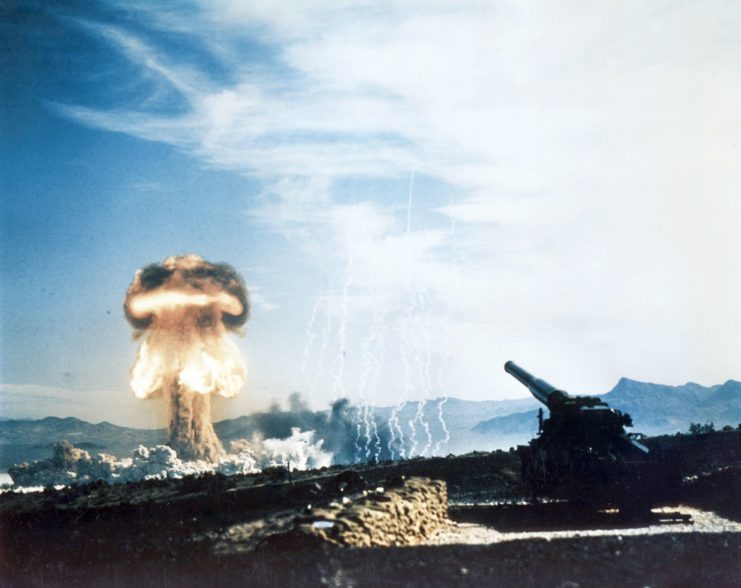
Following the test’s success, 20 cannons were manufactured at the Watervliet and Watertown arsenals in New York and Massachusetts, at a unit cost of $800,000 USD. By the end of the Cold War, Atomic Annie would be known for having fired the only nuclear shell from a cannon.
Almost immediately obsolete
Atomic Annie saw field use between April 1955 and December 1962 in Europe, as well as in Okinawa and South Korea. According to reports, the US Army hadn’t planned to use the cannon overseas. Its backup, nicknamed “Sad Sack,” was meant to be deployed, but the two accidentally got switched and the error wasn’t noticed until years later.
There were a lot of things working against the M65. Its large size, the advent of nuclear shells that were compatible with pre-existing artillery weapons, its limited range and the development of missile- and rocket-based artillery essentially made the cannon obsolete almost immediately after it was deployed. It was officially retired in 1963.
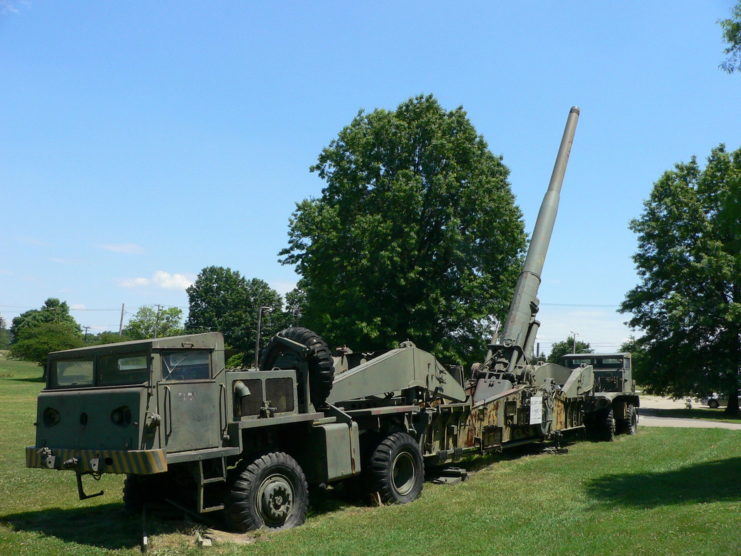
More from us: Lahti L-39: The Anti-Tank Weapon the Finnish Nicknamed the “Elephant Gun”
Of the 20 cannons that were produced, between seven and eight survive and have since been put on display across the US. Atomic Annie’s current home is the US Army Field Artillery Museum at Fort Sill, while others are located at the likes of Freedom Park in Junction City, Kansas and the National Museum of Nuclear Science & History in Albuquerque, New Mexico.
